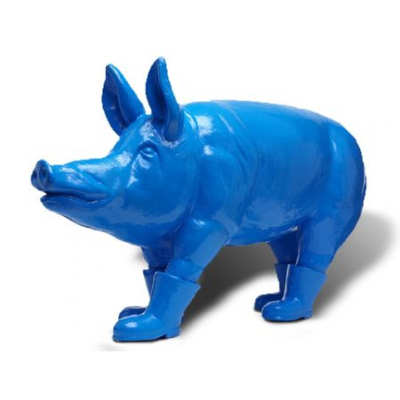
Details
Artist
Styles
Aquatinta, Carborundum etching // Zyklop Gelb by Otto Piene, created in 1984, is a striking example of the artist's experimental approach to printmaking. Utilizing carborundum etching and aquatint, this limited edition print (from an edition of 30) features a large, surreal, eye-like form in a mix of yellow and black tones against a rich, deep blue background. The image evokes the mythical Cyclops, with a gaze that seems to peer beyond the frame, merging organic textures with fantastical elements. Piene’s mastery of light and texture brings an intense, almost hypnotic quality to the composition. Measuring 76 cm by 108 cm, the work captures a fusion of abstraction and symbolism, typical of Piene’s exploration of cosmic and elemental themes.
Zyklop Gelb, 1984
form
Medium
Size
76 x 108 cm
- Inches
- Centimeters
Edition
Price
- USD
- EUR
- GBP
Details
Artist
Styles
Aquatinta, Carborundum etching // Zyklop Gelb by Otto Piene, created in 1984, is a striking example of the artist's experimental approach to printmaking. Utilizing carborundum etching and aquatint, this limited edition print (from an edition of 30) features a large, surreal, eye-like form in a mix of yellow and black tones against a rich, deep blue background. The image evokes the mythical Cyclops, with a gaze that seems to peer beyond the frame, merging organic textures with fantastical elements. Piene’s mastery of light and texture brings an intense, almost hypnotic quality to the composition. Measuring 76 cm by 108 cm, the work captures a fusion of abstraction and symbolism, typical of Piene’s exploration of cosmic and elemental themes.
- Recently Added
- Price (low-high )
- Price (high-low )
- Year (low-high )
- Year (high-low )
What is Environmental Art?
Environmental art is a collective term that refers to a wide range of artistic practices and works that engage with historical and ecological themes. The term often encompasses ecological concerns, although it is not exclusively defined by them. Environmental art acknowledges and appreciates the early history of the environmental art movement, including works with activist themes and those celebrating the connection between nature and the artist through the use of natural materials.





















